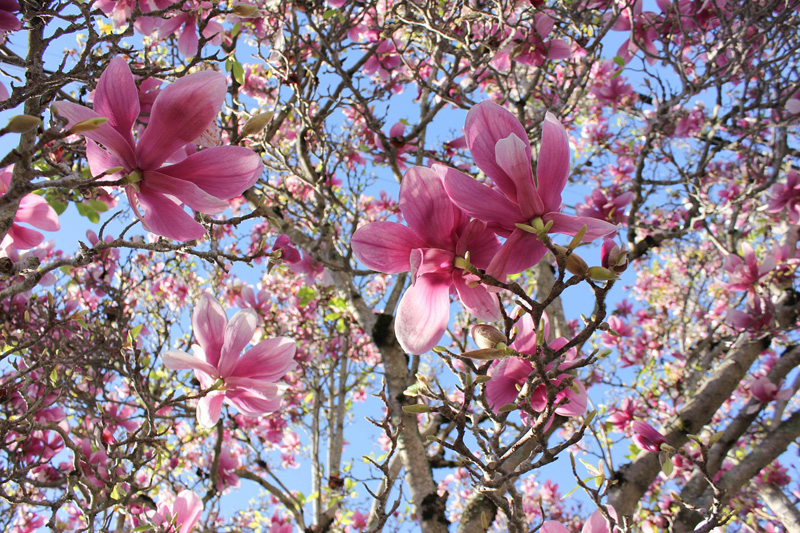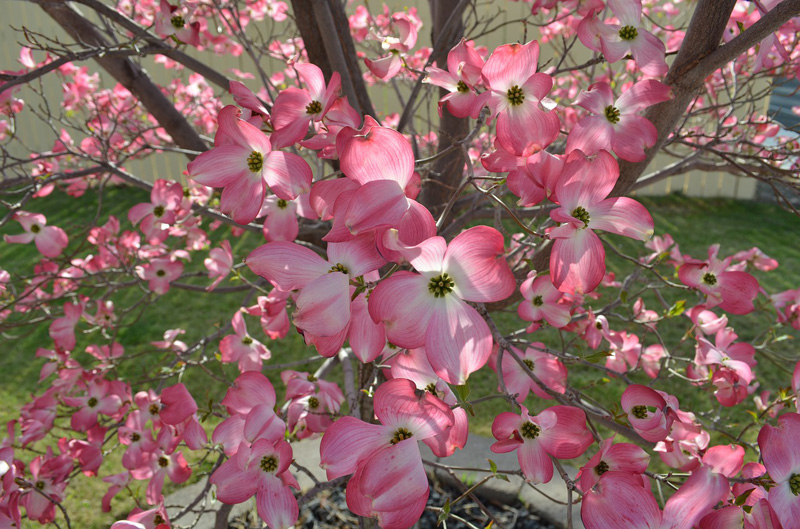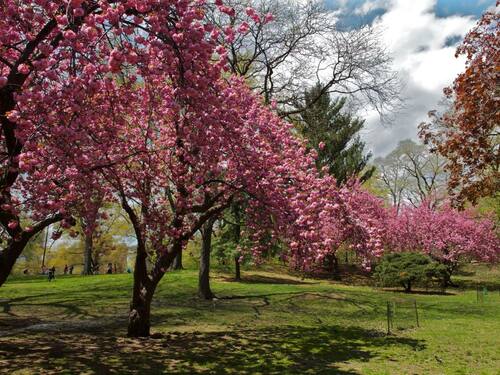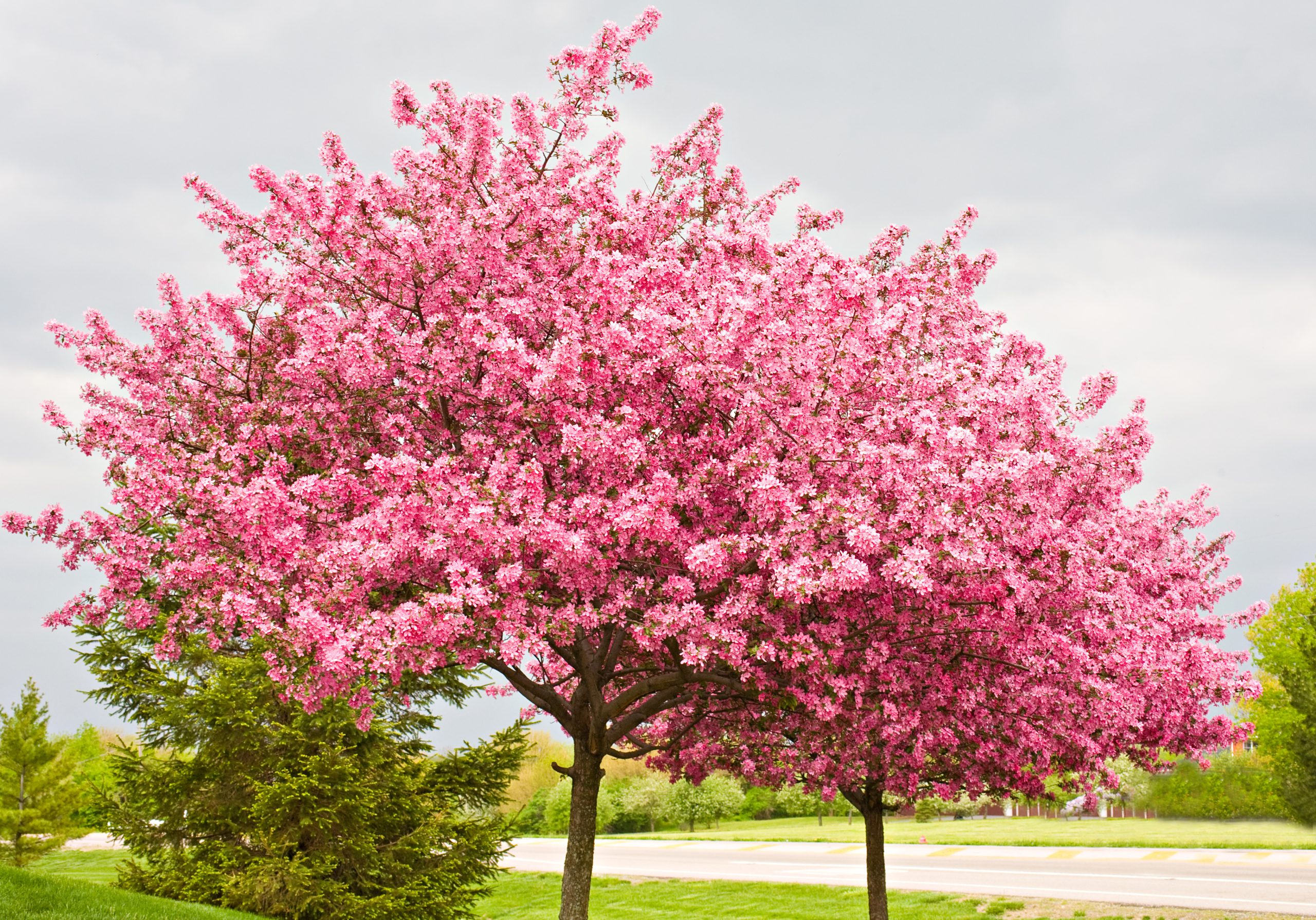The Top Flowering Trees for Spring
Bring Color and Beauty to Your Landscape
Spring is the perfect season to refresh your landscape with vibrant flowering trees that add color, fragrance, and visual appeal to your property. Whether you’re looking for pink blossoms, delicate white flowers, or stunning fall foliage, there’s a perfect flowering tree for every yard.
This guide will help you explore some of the best flowering trees for spring, including care requirements, ideal growing conditions, and potential challenges.
1. Saucer Magnolia Tree
The saucer magnolia is a breathtaking tree known for its large cup-shaped blooms that emerge in early spring, usually in March. The striking flowers have a rich rose to purple hue on the outside with a bright white interior, making them a standout choice for spring landscapes.

A Saucer Magnolia in Bloom: A Breathtaking Spring Display – Image by Ceeline on Pixabay
Why Choose the Saucer Magnolia?
- Early Spring Blossoms: One of the first trees to bloom, bringing color when most plants are still dormant.
- Compact Size: Grows 20-30 feet tall with a similar spread, making it suitable for medium-sized yards.
- Thrives in Various Climates: Best suited for USDA Hardiness Zones 4-9.
Care Tips:
- Sunlight: Requires full sun (at least six hours of direct sunlight daily).
- Soil: Prefers well-draining, slightly acidic soil.
- Maintenance: Needs protection from frost in its early years. Consider mulching around the base to retain moisture and insulate roots.
Potential Drawbacks:
- Sensitive to late-season frosts, which can damage buds.
- Requires seasonal pruning to maintain shape and health.
2. Dogwood Trees
Dogwood trees are among the most beloved ornamental trees in the United States, offering year-round beauty with their elegant branching, vibrant flowers, and striking fall foliage.

Flowering Dogwood: A Beautiful Symbol of Spring – Image by jwskks5786 on Pixabay
Varieties and Benefits:
- “Cherokee Chief” Dogwood : Reaches 25 feet tall with striking red flowers and berries.
- Japanese Dogwood : More resistant to anthracnose, a common fungal disease, and blooms slightly later in the season.
- American Dogwood : Classic variety with white, pink, or red blossoms every spring.
Why Choose Dogwood Trees?
- All-season Interest: Offers beautiful spring blooms, lush green summer foliage, and stunning red leaves in the fall.
- Wildlife-friendly: Produces berries that attract birds and pollinators.
- Moderate Size: Grows up to 25 feet tall with a 15-foot spread, making it ideal for residential landscaping.
Care Tips:
- Sunlight: Prefers full sun but can tolerate partial shade.
- Watering: Requires consistent moisture, especially in its first few years.
- Space: Needs adequate room to grow to maintain its natural shape.
Potential Drawbacks:
- Susceptible to dogwood anthracnose if not properly cared for.
- Requires regular pruning to remove dead or diseased branches.
3. Eastern Redbud Trees
Eastern redbud is a show-stopping ornamental tree that bursts into bloom with vivid pink-purple flowers in early spring. This tree adds charm to any landscape with its delicate blossoms and unique branching structure.
Blooming Redbud Trees: A Striking Springtime Scene
Why Choose the Eastern Redbud?
- Brilliant Spring Color: Blooms appear along bare branches before leaves emerge.
- Shade-tolerant: One of the few flowering trees that can thrive in partial shade.
- Seasonal Beauty: Features yellow foliage in the fall, providing year-round interest.
Care Tips:
- Sunlight: Prefers full sun but can tolerate some shade.
- Soil: Adaptable to various soil types but thrives in well-draining conditions.
- Watering: Regular watering is necessary, especially in dry conditions.
Potential Drawbacks:
- Lifespan is shorter compared to other flowering trees (typically 20-30 years).
- Requires occasional pruning to maintain a healthy structure.
4. Higan Cherry Tree
The higan cherry tree is a spectacular flowering tree that produces delicate pink buds and white blossoms in both spring and fall, making it a unique choice for year-round beauty.

Higan Cherry Blossoms in Full Bloom: A Spectacular Springtime Canopy
Why Choose the Higan Cherry Tree?
- Dual-season Blooming: Flowers twice a year, in spring and again in fall.
- Fast-growing: Reaches maturity quickly, making it a great option for homeowners looking for an instant impact.
- Attractive in All Seasons: Features stunning autumn foliage in shades of yellow, gold, red, and bronze. Its bark adds winter interest.
Care Tips:
- Sunlight: Requires at least four hours of direct sunlight daily.
- Soil: Prefers well-drained soil but is adaptable to different conditions.
- Watering: Needs regular watering during dry spells.
Potential Drawbacks:
- Susceptible to pests like aphids and scale insects.
- Requires occasional structural pruning for best growth.
Making the Right Choice for Your Landscape
Selecting the best flowering tree for your property depends on several factors, including:
- Climate and Hardiness Zone: Ensure that the tree you choose will thrive in your region.
- Available Space: Consider how large the tree will grow and how much room it will need.
- Sunlight and Soil Conditions: Match the tree’s needs with the conditions in your yard.
- Maintenance Level: Some trees require more care, such as pruning or disease prevention.
Final Thoughts
Adding flowering trees to your landscape is an excellent way to enhance curb appeal, attract pollinators, and enjoy the beauty of spring year after year. Whether you choose a saucer magnolia, dogwood, eastern redbud, or higan cherry tree, each of these options will bring seasonal color and charm to your outdoor space.
Originally posted on January 24, 2019



